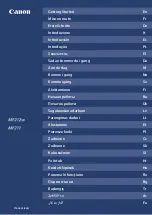
Light Ink Overview
Chapter 8
‐
Ink System Management
129
Océ Arizona 6100 Series
Light Ink Overview
Introduction
The Océ Arizona 6100 Series printers provide two light ink channels: Light Cyan (Lc) and Light
Magenta (Lm). This section provides a brief overview of the Light inks and how they are used
with the printer.
"6 color" Printing
With the Océ Arizona 6100 Series, the "6 color" digital color printing process uses CMYK inks plus
a lighter shade of cyan (LC) and magenta (LM) to deliver a higher photographic-quality output.
Color Reproduction and Image Quality
Six-color inkjet printers produce more subtle flesh tones and finer color graduations than
standard CMYK devices. The use of Light inks allows a wider range of tiny drops to combine to
create a broader palette of solid colors and improve the smoothing in density transitions.
Imaging Performance
Nozzle Redundancy
With the need to increase speed and compensate for the possibilities of "Nozzle Outs" during a
print, the additional Light Cyan and Light Magenta can "Fill in" where the darker inks fail to jet.
This results in higher productivity without losing a print. It is not that Light inks can completely
"make up" for the loss of dark nozzles, the light ink that remains reduces the visual effect of the
loss as your eye perceives it (lowering the visual contrast).
Ink Volume and Density
A heavier coverage of Light inks can used to make up for low density due to speed and ink
density limits.
"6 Color" Profiling
A heavier coverage with the Light Cyan and Light Magenta inks can be color-managed in the
same way as any printer with Lc and Lm with the addition of a few variables as referenced below.
ONYX Profiles
With the Arizona 6100 series, we provide 3 default ONYX profiles per "Mode":
• Saturated
• Normal
• Economy
Saturated
The Saturated profile is used to increase overall maximum density for Cyan and Magenta as well
as maintain the nozzle redundancy and lighter tone structure.
The drawback to this is that it adds "Volume" to the ink and can lead to some structure in the
solids with some dependency on the build of the color. However, with optimal lamp usage,
artifacts within the solid structure are minimized.
Summary of Contents for Arizona 6160 XTS
Page 6: ...Contents 6 Oc Arizona 6100 Series...
Page 7: ...Chapter 1 Introduction...
Page 15: ...Chapter 2 Safety Information...
Page 44: ...44 Chapter 2 Safety Information Oc Arizona 6100 Series Safety Awareness...
Page 45: ...Chapter 3 How to Navigate the User Interface...
Page 67: ...Chapter 4 How to Operate Your Oc Arizona Printer...
Page 79: ...Chapter 5 How to Operate the Vacuum System...
Page 85: ...Chapter 6 How to Print in Batch and Dual Origin Modes...
Page 91: ...Chapter 7 How to Manage a White Ink Workflow...
Page 125: ...Chapter 8 Ink System Management...
Page 135: ...Chapter 9 Error Handling and Troubleshooting...
Page 139: ...Chapter 10 Printer Maintenance...
Page 174: ...174 Chapter 10 Printer Maintenance Oc Arizona 6100 Series How to Bleed an Ink Filter...
Page 175: ...Appendix A Application Information...
















































